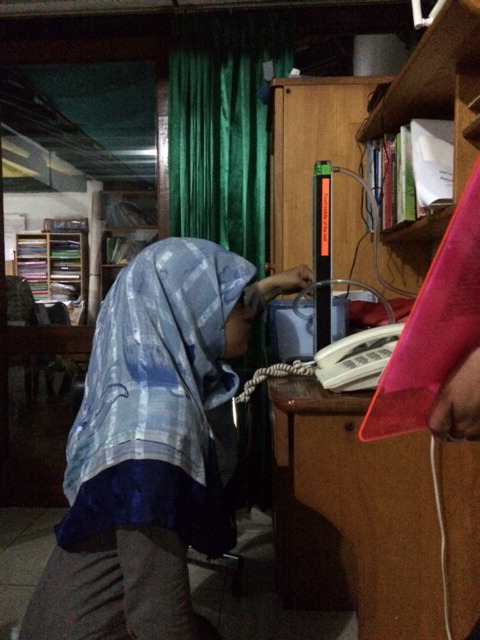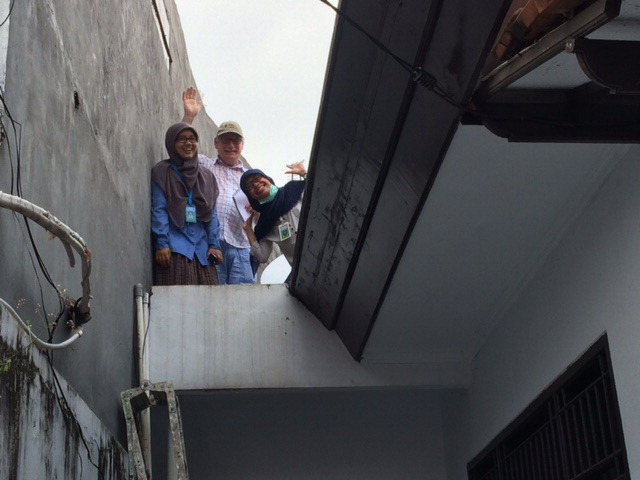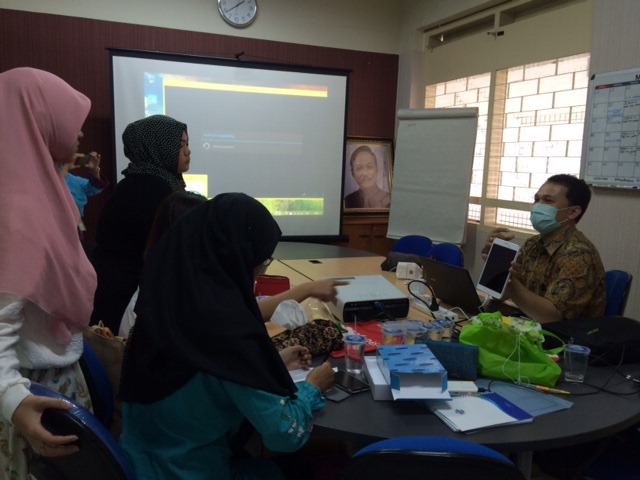The PEER team undertook several types of air pollution measurements, including installing devices to measure particulate matter and NO
2 at multiple sites in Jakarta city. The sampling mechanisms included one reference site, which will measure air pollution level throughout the year; an electric scooter equipped with a measuring device to take measures around Jakarta, particularly in the area around mothers’ residences; and passive nicotine samplers installed in a random subset of homes (50 pregnant women). The researchers surveyed pregnant women to investigate domestic smoking habits and sent the passive sampler papers to the Netherlands to be analyzed.
Among the health outcome measurements researchers collected were maternal obstetric data, pregnancy-induced hypertension, nutritional analysis, maternal lung function, fetal growth, hair and nail sampling, vaginal swab sampling, placental and blood cord sampling (only if mothers consented), and birth outcomes. Health outcome measurements for the infants included growth, infection episodes, lung function, and cardiovascular outcomes. The researchers followed up with mothers and infants over the course of several years.
The PEER team also presented workshops on air pollution measurements, use of a mobile app to measure infection episodes in infants, placental sampling, and spirometer training. The group developed both local and international collaborations with healthcare providers, researchers, and academic institutions and maintained a website on their research activities. The PI and team also received two additional grants, worth a total of $22,000, related to the work. Their 2023 paper (see citation below) presented their findings, including an association between maternal exposure to soot and NO
x during pregnancy and reduced length of babies at birth.
PublicationFrida Soesanti, Cuno S.P.M. Uiterwaal, Kees Meliefste, Jie Chen, Bert Brunekreef, Nikmah S. Idris, Diederick E. Grobbee, Kerstin Klipstein‑Grobusch, and Gerard Hoek. 2023. The effect of exposure to traffic related air pollutants in pregnancy on birth anthropometry: a cohort study in a heavily polluted low‑middle income country.
Environmental Health 22:22.
https://doi.org/10.1186/s12940-023-00973-0 





